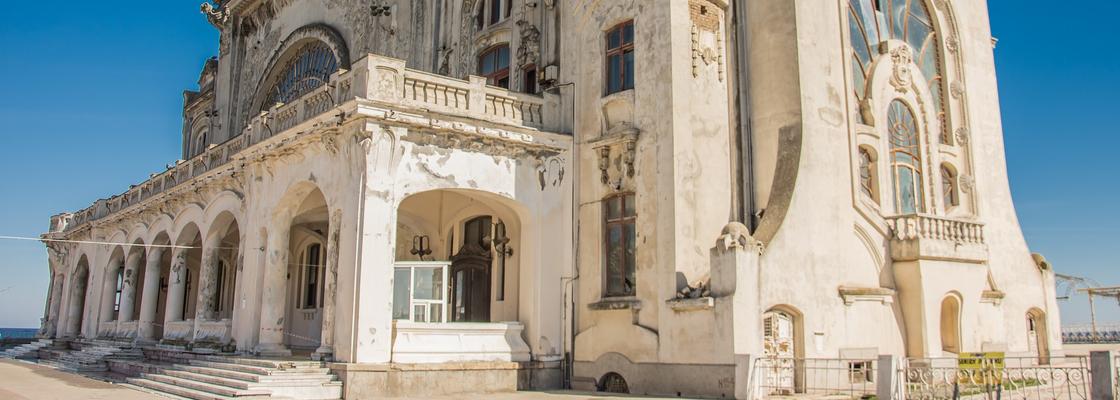
Constanta (Romania)
Constanta has a strategic geographic position, being located on the route of 3 Trans-European Transport corridors (Corridor IV, Corridor IX and Corridor VII Danube) and also at the junction of commercial routes that link the markets of countries which do not have sea access from Central and Eastern Europe with the Caucasus, Central Asia and the Middle East regions.
Mamaia resort (one of Constant's neighbourhoods) is the most vibrant Romanian resort on the Black Sea attracting more than 883.900 tourists each summer and for the past 10 years these numbers are continuously growing by 10-15 % per annum.
Constanta Port, the biggest on the Black Sea, is one of the main economic players in the region and together with the hospitality industry and the tertiary sector shapes Constanta`s economic environment.
Both the City and the Port are well connected to al modes of transport: rail, roads, inland waterway, maritime transport and air.
Regarding sustainable urban mobility issues, the city is fully committed to its principles and is trying to create an accessible, safe, secure, healthy and liveable urban environment for its citizens, visitors and business.
| City area | 124.89 km² |
| Metropolitan area | 1,013.5 km² |
| Population: city area | 317 832 inhabitants |
| Population: metropolitan area | 491 498 inhabitants |
| Population density: city area | 2,273 inhabitants/km2 |
| Population density: metropolitan area | 532 people/km2 |
| Climate | Borderline humid subtropical (Cfa) Humid continental climate (Dfa) Oceanic and semi-arid influences. |
| Gender balance | 51% Female / 49 % Male |
| Average life expectancy | 75.6 years (2014 national statistics) |
| Car ownership rate | 227 cars/1000 inhabitants In the past 10 years, car ownership in Constanta has been growing by at least 4.5 % per annum. |
| Accident rate | 1321 accidents causing injuries in 2015 (1698 injured people and 72 deceased). |
Modal Share

Bus (25.22%)
Minibus (11.13%)
Train (0.12%)
Walking (26.49%)
Bicycle (0.58%)
Motorcycle (0.16%)
Car driver (27.75%)
Car passenger (7.12%)
Taxi (1.36%)
Light truck (0.08%)
Challenges
Governance:
- Different forms of government/administration. – the city is governed in a decentralized way by the Local Council and the Mayor that are locally elected while the Port authority is a national company under the Ministry of Transport authority.
- Lack of a common development vision
- Lack of integrated policies
- Lack of common initiatives
- Lack of communication
People:
- Private cars dependencies
- No sustainable mobility habits
- Not enough citizens involvement – lack of communication skills
Transport system:
- An old transport system that is not adapting to the new changes in people growth and inward urban sprawl mostly because we lack good sets of data and also trained and motivate staff to operate with these data sets.
- Lack of trained staff
- Lack of data
- Not adapting to the new changes/technologies but interested to introduce them into the local market
Freight:
- Lack of freight delivery planning, especially in centre area of the City, the proximity of the Port and main commercial areas.
- Lack of data
- Lack of institutional framework regarding freight delivery in the area
Transport Infrastructure
Car network
Data provided from the Public Services Department of Constanta Council has outlined that Constanta has a total of 377km of roads, which are broken down in to the following categories
- Category I (motorways) 39km
- Category II(state roads) 18km
- Category III (provincial roads) 285km
- Category IV (rural roads) 35km
The overall highway network is dominated by local level access, with relatively short lengths of strategic roads providing access to other counties and neighbouring towns.
Types of junction within Constanta:
- Traffic Signals
- 35 signalised intersections
- 35 lights with countdown timers
- No adaptable signals (i.e. fixed time system)
- No public transportation activation
- No priority for public transport
- Roundabouts
30 roundabouts
Cycling network
With only 6,2 km of bike lanes, 1,2 km of bike lane in the city centre and another 5 km in Mamaia resort, the city is not so well developed when speaking about the cycling network.
In 2016 the city has just finished the Bike sharing project, a project that was co-funded through the CBC Romania – Bulgaria programme 2007 -2013.
But within the new developed SUMP the city established one ambitious target and this is to build at least 20 km of bike lanes by the end of 2023.
Public transport network
The public transport network is pretty well developed - about 36% of population in Constanta is using the public transport network.
”Regia Autonoma de Transport in Comun Constanta” (RATC) is working under the authority of the Local Council,
RATC provides around 80% of the public transport in Constanta city.
RATC operates 196 buses
- 186 Euro II, III or IV standard MAZ buses (the oldest vehicles are 12-13 years old)
- 10 Euro III standard, open top double deck Volvo Ayats (operating during the summer season for touristic purposes)
RATC operates on 22 routes:
- Shortest is 8,8 km of length
- Longest 38,2 km of length
There are another 3 private companies that operates 9 mini-buses routes. Most of these routes are operated jointly with RATC buses.
Constanta after PORTIS

Number of port employees: - 1%
Total employment in city: +6,7%
Unemployment rate in city: -23,1%
New jobs thanks to docks redevelopment: +100
New businesses thanks to port redevelopment: +15
City-port commuters by car: -4%
Commuting travel time: -10%
Modal share in city: PT +6,9%, Cycling and walking +36,4%




















